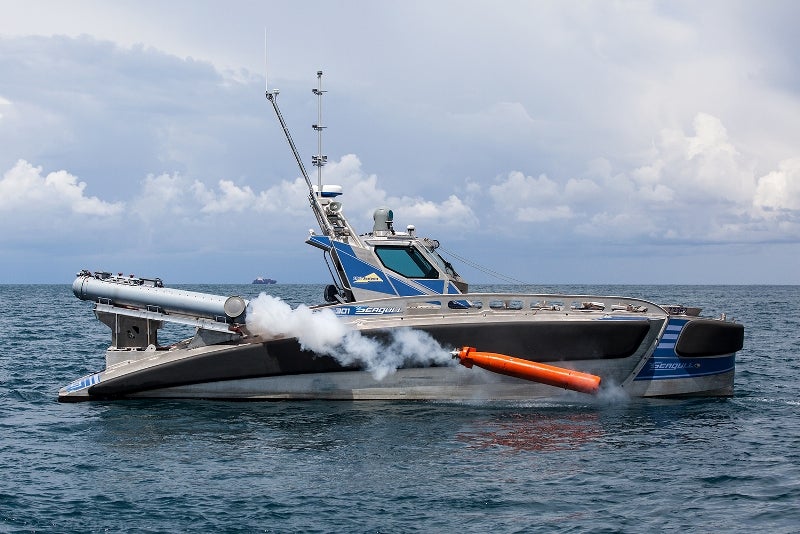
A helicopter long-range active sonar (HELRAS) dipping sonar has successfully completed a sea acceptance test (SAT) onboard Elbit Systems’ unmanned surface vessel (USV) Seagull.
The SAT test was conducted by the Israeli Navy to assess the integration of the HELRAS dipping sonar into the Seagull.
According to Elbit Systems, the operational working time increases when a dipping sonar is operated on-board a USV.
In addition, the sonar enhances the detection capabilities and the effectiveness of anti-submarine warfare (ASW).
Equipped with switchable, modular mission payload suites, the Seagull autonomous multi-mission USV can be deployed in support of mine countermeasure missions (MCM), electronic warfare, maritime security, and hydrography.
The Seagull can also be used to conduct other missions using the same vessel, mission control system and data links.
The USV offers a mission endurance of more than 96 hours and delivers reduced risk to human life and cuts procurement and operating costs.
Made from aluminium and composite materials, the 12m boat features removable floats and bridge dynamic positioning system. It is designed to operate in sea states up to four and survive sea state seven.
Previously, Elbit completed the integration of lightweight torpedo launchers on the Seagull.
In December last year, the company partnered with Leonardo to develop and demonstrate the latter’s lightweight and mini torpedoes launching capabilities from the USV.
The partners will develop a solution based on the same architecture used for airborne torpedo launching systems.



